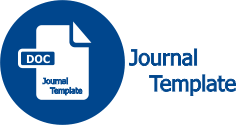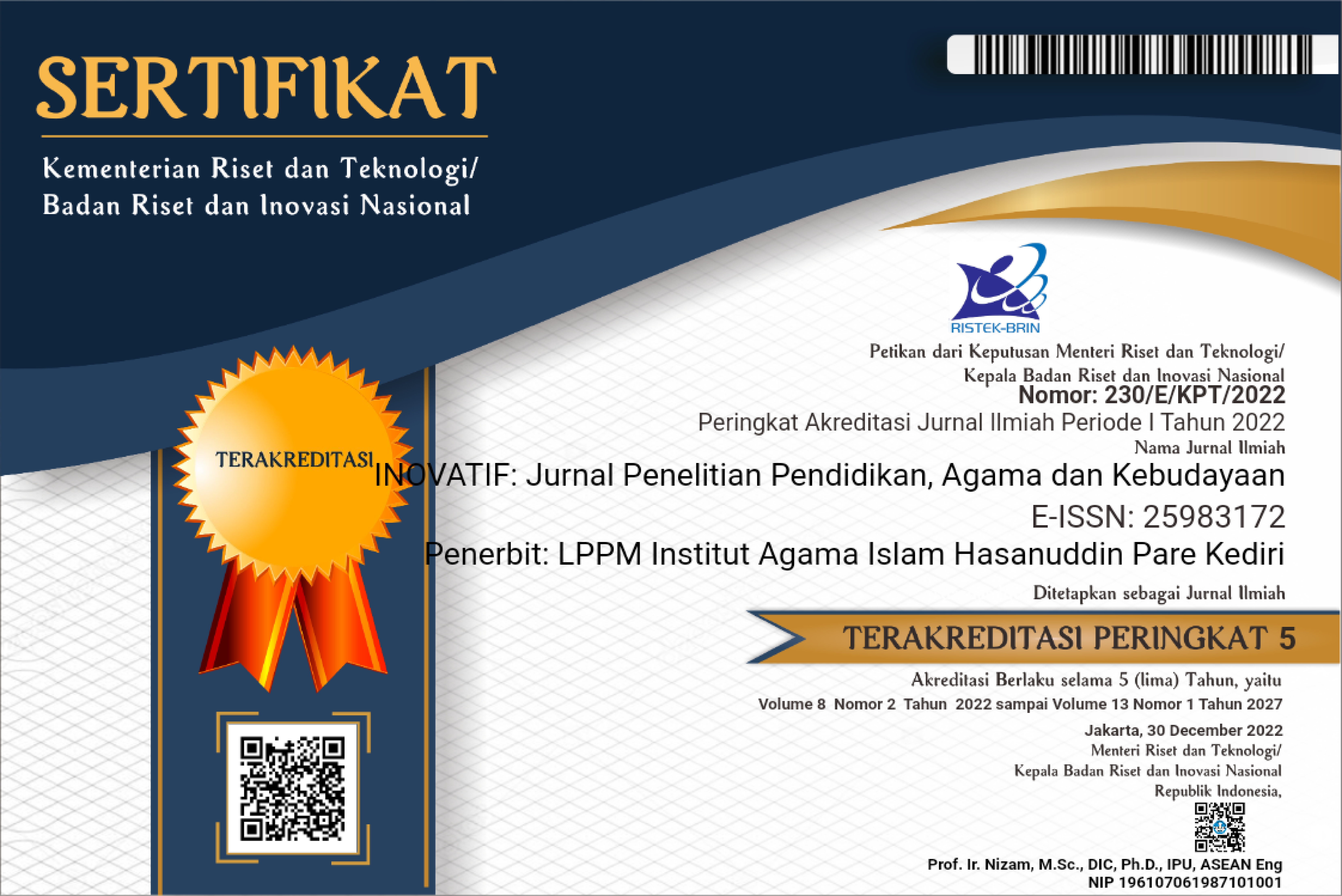BUDAYA LARUNG SEMBONYO DALAM PERSPEKTIF HUKUM ISLAM Desa Tasikmadu, Kec. Watulimo, Trenggalek
Abstract
This research is motivated by the existence of a culture, where culture is a tradition, carried out by the people of Tasikmadu Village, Prigi. This tradition is the running of offerings or what is known by the community as larung sembonyo which in practice is in the form of slametan / kenduren located at the TPI (Fish Auction Place) and the coast. The focus of the problem in this study is (1). How is the implementation of the culture of larung sembonyo carried out by the people of Taikmadu, Watulimo District, Trenggalek Regency? (2). How does Islamic law review the culture or ritual of larung sembonyo that serves food and slaughter animals according to Islamic law? The objectives of this study are (1). To find out how the implementation of larung sembonyo is carried out by the people of Tasikmadu, and (2). This is to find out how Islamic law reviews the culture or ritual of larung sembonyo which serves food or slaughtering animals. In this study, researchers used qualitative methods. What is meant by qualitative method is a research approach that reveals certain social situations by describing the reality correctly, formed by words based on collection techniques, in-depth interviews and analysis of relevant data obtained from natural situations.
After the author conducts research using the method he above, the authors get the conclusion of the research results: 1). The procedure for implementing the larungsembonyo tradition consists of three stages, namely the opening stage, the implementation stage, and the closing stage. 2). In the perspective of Islamic law that is practiced by the community, it is permissible, unless there are deviations in Islamic teachings such as prayers addressed and animals that are slaughtered and the food served is not addressed to Allah.
Downloads
References
TIM PP Muhammadiyah Mailis Tarlih, “Tanya Jawab Agama”: Suara Muhammadiyah, Juli 1998
http://www.sarjanaku.com/2011/08/pengertian-hukum-islam-syariat islam.html, 29 Mei 2012
Prasetyo, Teguh. 2006. Hukum Islam Menjawab Tantangan Zaman yang Terus Berkembang. Yogyakarta: Puataka Pelajar.
Asmani, Ma’mur, Jamal. 2007. Fiqh Sosial Kiai Sahal Mahfud. Surabaya: Khalista.
Muhammad. 2007. Aspek Hukum Dalam Muamalat. Yogyakarta: Graha Ilmu.
As-Subki, Yusuf, Ali.2010.Fiqh Keluarga Pedoman Berkeluarga dalam Islam. Jakarta: Amzah
Mardani. 2010. Hukum Islam Pengantar Ilmu Hukum Islam di Indonesia. Yogyakarta: Pustaka Pelajar.
Endraswara, Suwardi. 2004. Mistik Kejawen Sinkretisme, simbolisme dan Sufisme dalam Budaya Spiritual Jawa. Yogyakarta: Narasi.
Hariwijaya. 2006. Islam Kejawen. Yogyakarta: Gelombang Pasang.
Ali, Davis & Mohammad. 2007. Hukum Islam Pengantar Ilmu Hukum dan Tata Hukum Islam di Indonesia. Jakarta: PT Raja Grafindo Persada.
Jhonson, S, Alvin. 2004. Sosiologi Hukum. Jakarta: PT Rineke Cipta.
Jahuar, Husain A.2009. Maqashid Syariah. Jakarta: Amzah
Galib, Muhammad M. 1998.Ahl Al-Kitab Makna dan Cakupanya. Jakarta: Paramadina
Abdurrahman Fatoni. 2006. Metodologi Penelitian dan Tehnik Penyusunan Skripsi. Jakarta: PT. Rinekha Cipta.
Dedi Mulyana. 2006. Metodologi Penelitian Kualitatif. Bandung: Rosda.
Lexy J. Moeleong. 2006. Metodologi Penelitian Kualitatif. Bandung: PT Remaja Rosdakarya.
Tri Prasetyo, Joko. 1998. Ilmu Budaya Dasar. Jakarta: PT Rineka Cipta.
Liliweri, Alo. 2004. Dasar-Dasar Komunikasi Antar Budaya. Yogyakarta: Pustaka Pelajar.
Dea O.F. 1996. Sosiologi Agama.Jakarta: PT Raja Grafindo Persada.
Endraswara, Suwardi. 2012. Metodologi Penelitian Kebudayaan (Kajian Ritual). Yogyakarta: Gadjah Mada University Press.
Saifudin Anshari, Endang. 2004. Wawasan Islam: Pokok-pokok Pikiran Tentang Pradikma dan Sistim Islam. Jakarta: Gema Insani.
Woodward, Mark R. 1999. Islam Jawa: Kesalehan Normatif Versus Kebatinan, Yogyakarta: Lkis.
Darori Amin, Darori. 2010. Islam Dan Kebudayaan Jawa, Yogyakarta: Gama Media.
Masdar, Umarudin. 2002. Agama Orang Biasa, Yogyakarta: Lkis, cet II.
Copyright (c) 2017 danang permadi

This work is licensed under a Creative Commons Attribution-NonCommercial 4.0 International License.
Please read Copyright Notice for Inovatif: Journal of Research on Religious Education and Culture





